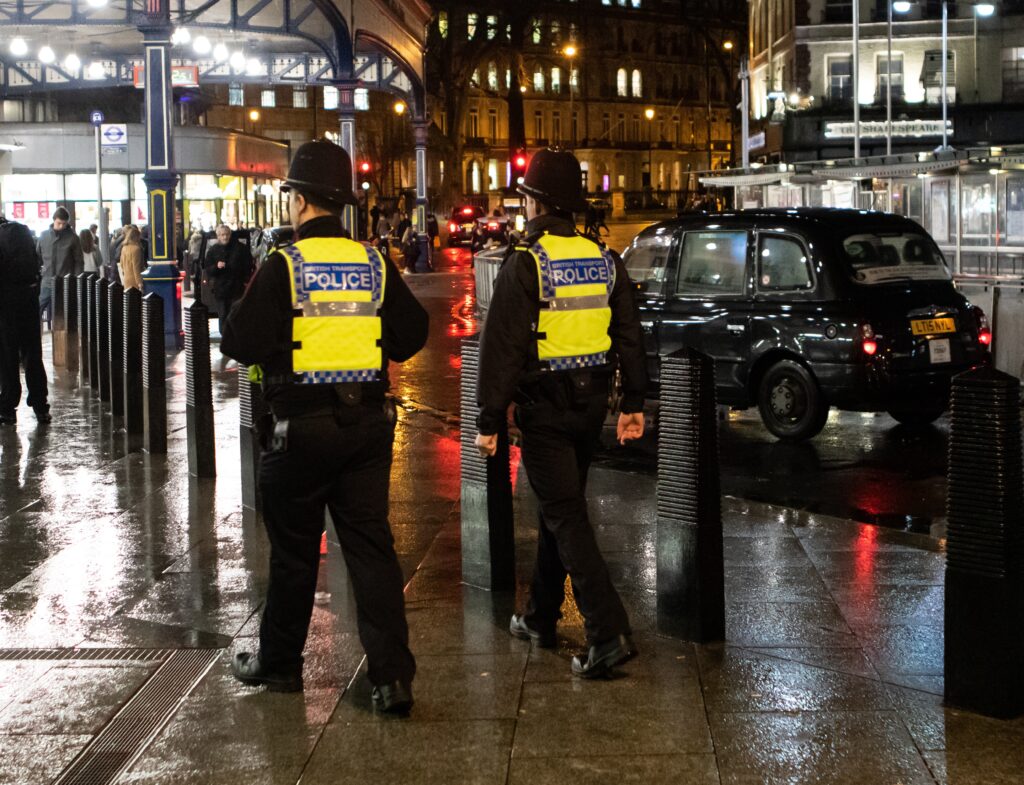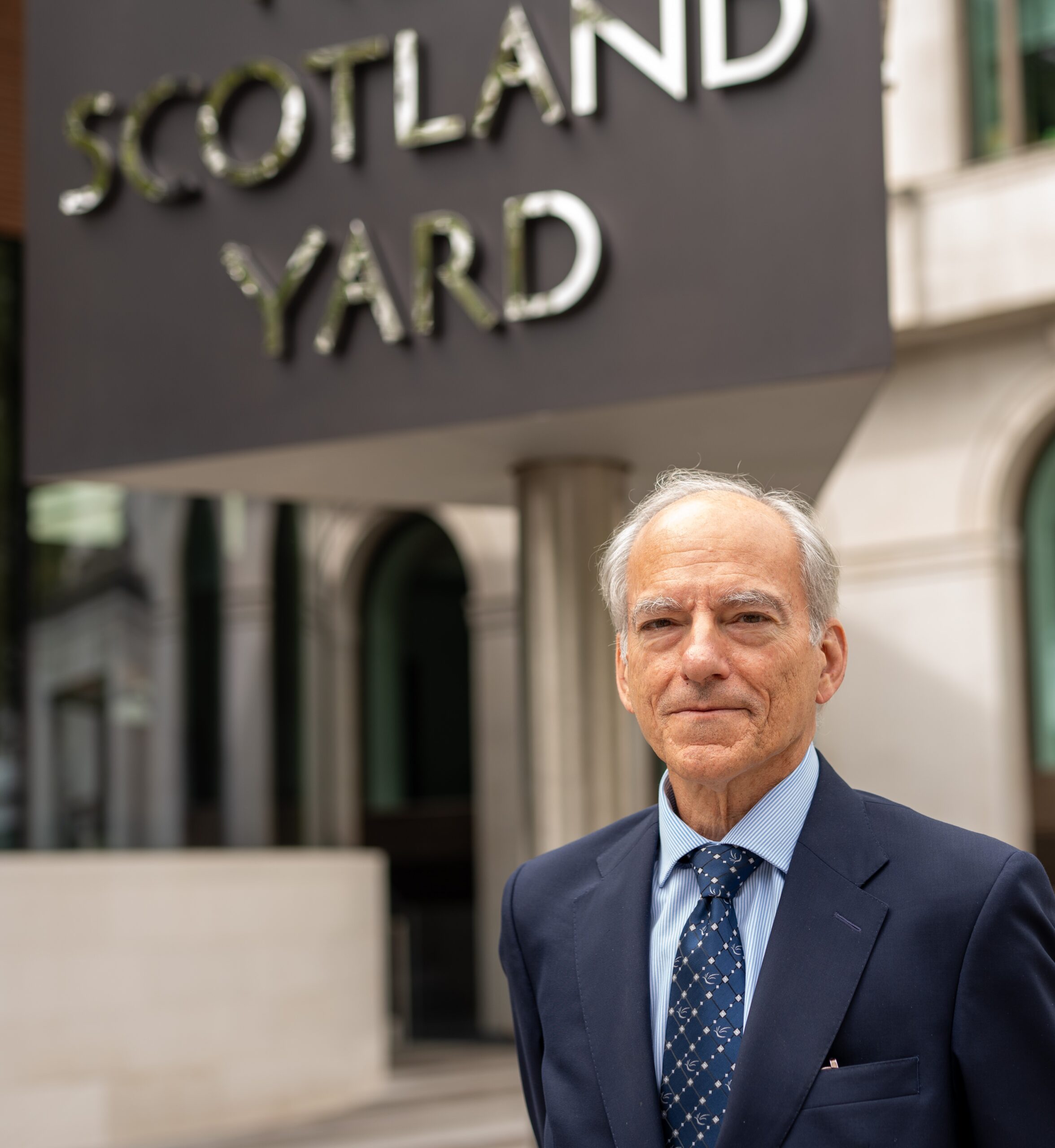Lawrence Sherman outlines approach to focus on most harmful criminals and acknowledges risks of bias, but argues that ‘the perfect is the enemy of the good’ in pursuing data-led innovation
“The perfect is the enemy of the good – if we don’t use this information, I think we’re not doing our duty to protect people.”
The use of data analytics by law-enforcement agencies seeking to better understand – or even predict – crime is rarely without controversy. But the above comments speak to the commitment of professor Lawrence Sherman, appointed last year as the first ever chief scientific officer of London’s Metropolitan Police Service, that the better use of data is essential is preventing the most harmful offences, and pursuing those who commit them.
Sherman, a Cambridge University criminology professor who has advised numerous law-enforcement agencies in his native US and around the world, is regarded as the founder of evidence-based policing – an approach which advocates greater use of data analysis in deploying resources, and ascertaining the effectiveness of new initiatives via controlled testing processes.
At a small-scale discussion with reporters, attended by PublicTechnology, Sherman shed light on a pioneering new data-led method being deployed to help tackle offences of violence against women and girls (VAWG). The approach involves “stacking” the 35,000 people named, at some point in the last year, as a suspect in a VAWG case.
“Eighty per cent of these identifications of the suspects are emerging from Londoners. And so, if there’s a bias in Londoners naming people – we have to wear it, because we can’t check it. We can’t do studies of every witness and every victim in terms of their propensity to accuse somebody of one ethnic group versus another.”
The stack, which will be updated on a rolling weekly basis, is ordered to represent the harm caused by each suspect. Positions on the list are ordered by the cumulative length of prison sentence that each person would receive – as per guidelines issued by government arm’s-length body the Sentencing Council – if they were convicted of all crimes in which they are a suspect.
The intention is then to focus greater resources on the top 100 suspects in the stack – adopting an approach referred to as ‘precision policing’.
In this group, there is an average of four suspected offences, and the vast majority are suspected of either murder or rape – alongside other offences – and would face potential sentences of least 15 years’ incarceration.
The median recommended sentence for the entire 35,000-strong list, meanwhile, is 11 days.
Across the whole stack, the collective recommended sentence is 10 million days – some 530,000 of which are accounted for by the top 100.
Sherman says: “If you think about this in terms of police resource allocation and you say: ‘Well, we ought to concentrate on the high risk offenders – so, let’s just take the top third’. Well… first of all, you’re going have far too many people – because we can’t track 7,000 people; counterterrorism can’t do it – nobody can do it. You’ve got a limited number of people that you can throw full resources at – find out where they are, find out what tools you have to go back to their victims and get a statement – which is what happened in our first case.”
The case in question involved a suspected violent offender suspected of multiple offences in the borough of Hounslow, who featured among the top 100 priorities after being named as a suspect by multiple victims. Having been brought to the attention of officers by the compilation of the stack, a detective constable dedicated a “35-hour non-stop shift” to gathering evidence, resulting in the Crown Prosecution Service signing off on charges – and the suspect being remanded in custody.
Sherman adds: “Because we use these methods to put this guy up in this high level, it motivated the officer, it motivated the victims, it got everybody seeing that, it’s not just a personal matter for you as a victim, that you don’t want to give the evidence – it’s [that] this is a really bad person, and you’re going to prevent other people from being victimised by this person if you can help the case. So, the constable got the statements.”

Stop and search
The data-driven principles of precision policing are also being trialled in the Met’s stop and search operations – a long-time source of controversy and criticism for police forces around the country.
A 2021 report from parliament’s Home Affairs Committee found that “unjustified racial disparities in stop and search” was one of various “deep-rooted” issues faced by the police in tackling systemic racism and improving relations with ethnic minority citizens.
The Baroness Casey Review published this year – which provided a sweeping independent assessment of the Metropolitan Police’s standards and culture – concluded that “the use of stop and search in London by the Met needs a fundamental reset”.
The review adds: “A recent report examining the experience of Black communities nationally on stop and search shows that, while 77% of Black adults support the use of stop and search in relation to suspicion of carrying a weapon, less than half of those who had been stopped and searched felt that the police had communicated well with them or explained what would happen. The research showed that larger numbers of Black people felt traumatised and humiliated by the experience of stop and search than other ethnic groups.”
The data-led trial of new ways to conduct stop and search policing appears to, at least, take these findings into account. The deployment of the stacking method in this case ranks each of the 679 individual wards across the capital’s 32 boroughs by their levels of weapons-enabled crime.
“There’s two ways to think about the way to transform stop and search,” Sherman says. “And the first way is to think about making it as legitimate as possible – because it’s focusing on places with very high risks of people getting stabbed or killed with weapons.”
This focus will initially be placed, on a pilot basis, on three areas of the capital – two in Lambeth, and one in Barking and Dagenham – each of which have a ward in the top 10 of the stack.
35,000
Annual number of people in London named as a suspect in an offence of violence and women and girls
100
Number of these suspects – that vast majority of whom are suspected of rape or murder – that the Met will focus on
10 million days
Total cumulative recommended prison sentence across the 35,000 suspects
11 days
Median sentence for the lower half of the list – compared with 15 years for the vast majority of the top 100
The trial applies to routine section 1 stop and search activities – whereby an officer requires “reasonable grounds” to suspect that someone is in possession of illegal or otherwise prohibited articles, such as weapons or drugs. The pilot does not encompass the broader section 60 powers – typically only applicable after a major incident or during an increased threat level – which remove the requirement of reasonable suspicion to conduct a stop and search.
Alongside using the data to focus resources on areas most afflicted by knife crime, the second strand of transforming stop and search will concern “the way in which officers interact – with young men in particular”, according to the chief scientific officer – who adds that he has “personally trained about 100 officers… under the precision stop and search programme in the last month”.
“They’re really going away… saying that they understand the principles of procedural justice – the most important of which is to say why are we doing this: ‘We are doing stop and search here to protect people like you, and to keep you from getting stabbed, to keep your neighbours and friends from getting stabbed’,” Sherman says. “And, across England, when we look at the body-worn camera footage… the last thing that police are good at is telling people why they’re doing [something] for everybody’s good.”
A bias view
Any use of data analytics – particularly by public bodies, and especially in an area as sensitive as policing – is liable to raise concerns about the potential that the data in question could reflect and entrench the biases of the environment in which the information was gathered.
PublicTechnology asks Sherman whether he sees a significant potential risk that the data science techniques he is espousing could perpetuate bias, and what steps can be taken to address any such risk.
“I think we have a great deal of clarity about the way in which we are naming these people [on the stack of VAWG suspects]. It’s not coming from implicit bias of police officers; it’s not coming from implicit bias of people in criminal networks – or even social networks; it’s coming from victims and witnesses,” he responds.
“In our preliminary cut, 80% of these identifications of the suspects are emerging from Londoners. And so, if there’s a bias in Londoners naming people – we have to wear it, because we can’t check it. We can’t do studies of every witness and every victim in terms of their propensity to accuse somebody of one ethnic group versus another.”
The chief scientific officer acknowledges that suspect lists may, indeed, be shaped by “variations by communities… in propensity to tell the police” about crime.
“There’s two ways to think about the way to transform stop and search. And the first way is to think about making it as legitimate as possible… the second is the way in which officers interact – with young men in particular.”
“If there’s a structure here that creates differential risk of individuals being named, that would be consistent with everything we know,” he adds. “And, so, why are we doing [this]? And the answer is because the perfect is the enemy of the good; if we don’t use this information, I think we’re not doing our duty to protect people who, as you can see, are at far more risk, if they’re encountering somebody at the [top] end of stack than the [bottom].”
The decision to focus on suspects represents the Met “breaking new ground” in the world of evidence-based policing. This approach was, in part, guided by the case of John Worboys – known as the ‘black cab rapist’ – who was convicted in 2009 of offences against 12 women but is believed to have attacked about 100 victims.
“Worboys managed to be named as a suspect without getting arrested over and over and over,” Sherman says. “And, because we can’t get the evidence, isn’t sufficient reason to believe that somebody’s innocent and, if we’re seeing so much smoke, then I think what we’re saying is: ‘let’s investigate and see what we find by way of fire’.”.
This latest development in Sherman’s career-long work in enabling evidence-based policing “is not being used in any other police force I know of in the world”. It is still in its early days but, having been unveiled earlier this month, the Met has fielded enquiries from across the UK and beyond, including interest from Australia, as well the New York Police Department and other forces in the US.
As he approaches the end of his first year in the job, Sherman is confident that this will be the first of many instances of London officers pioneering innovative new approaches.
He says: “I think the Met, with science, can lead the world.”




